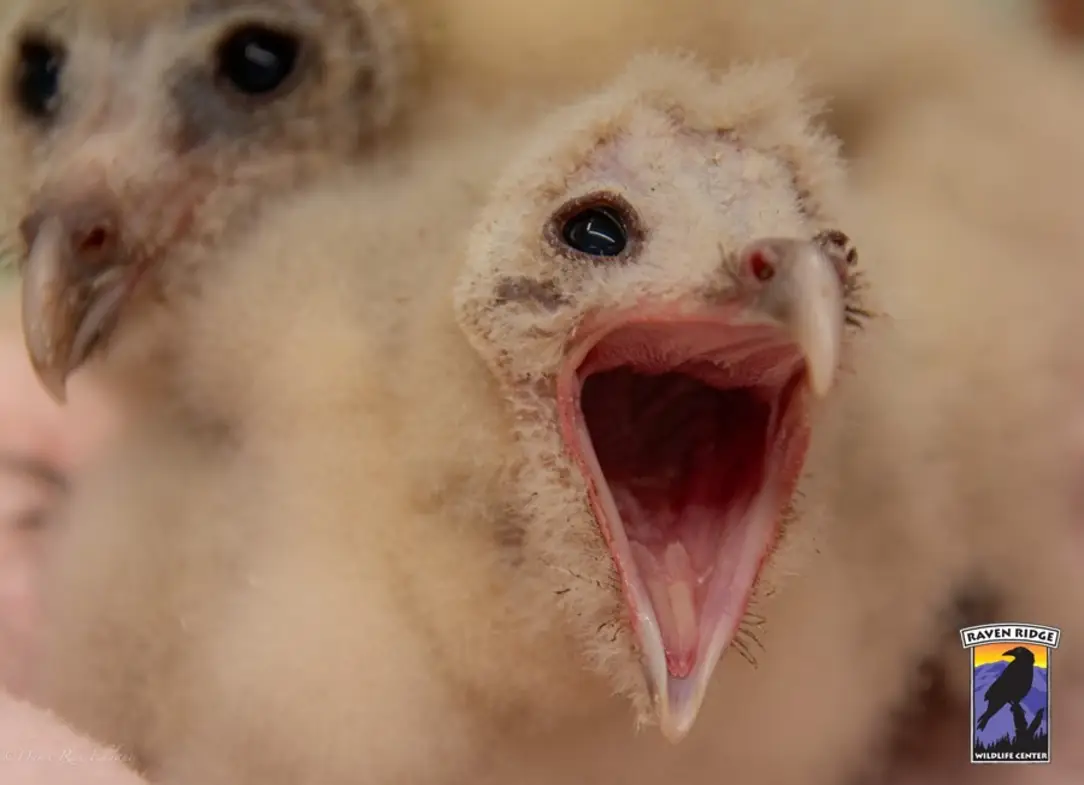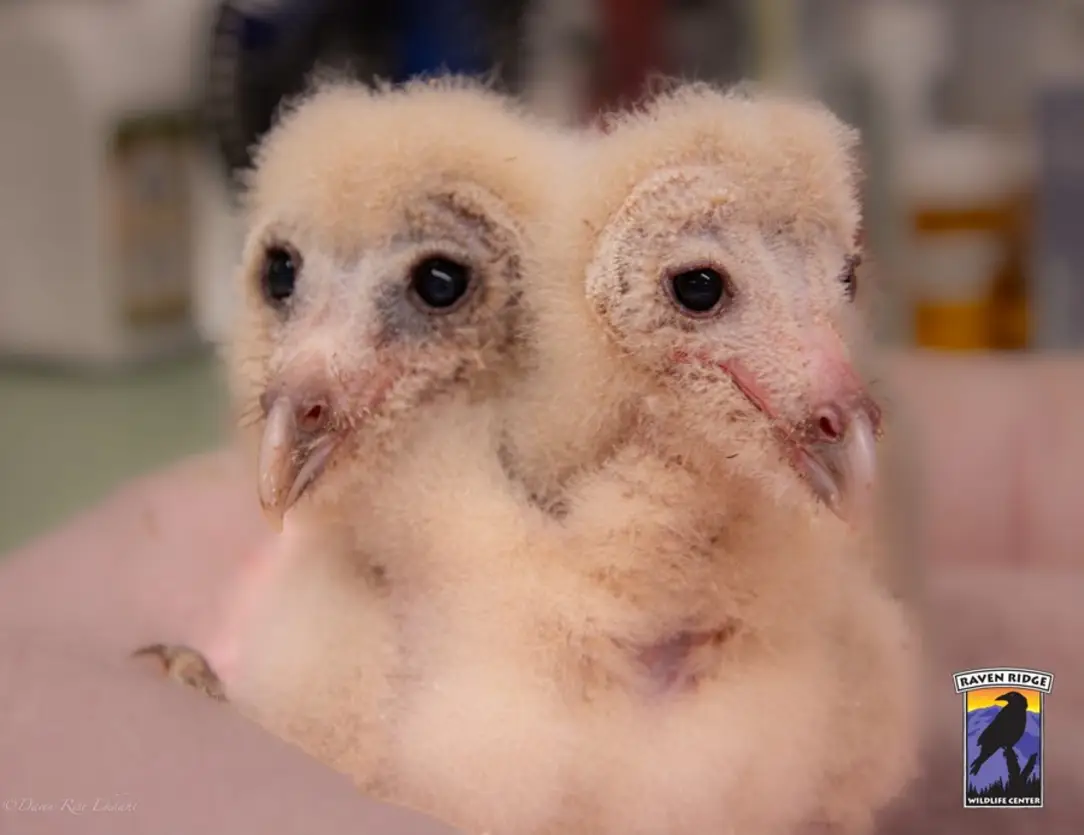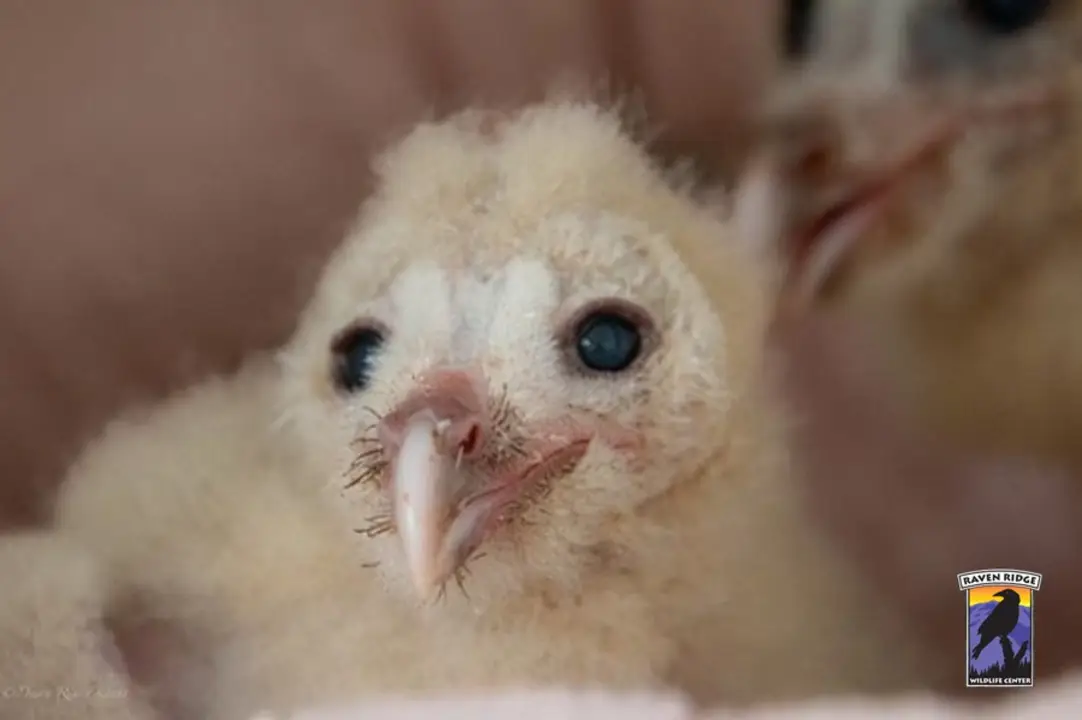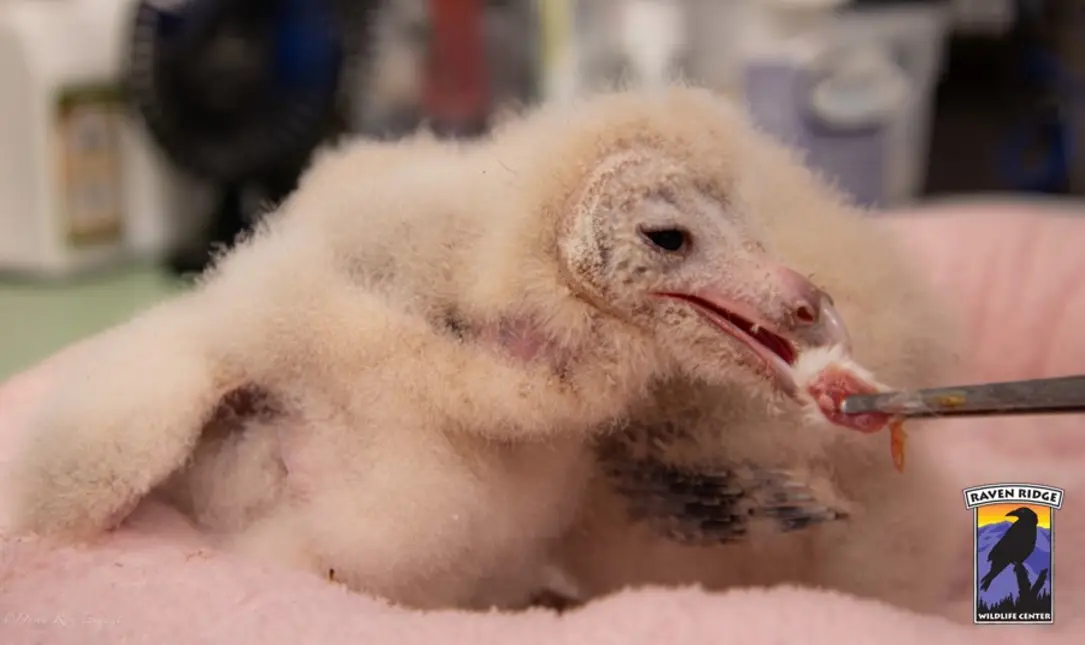From Raven Ridge Wildlife Center
This was a groundbreaking moment for our team at Raven Ridge Wildlife Center. When we received a call from our PA state game warden, Veylupek, regarding a destroyed nest of two baby Barn owls that were trapped in a silo, we knew there was a chance to save them. Thanks to the swift action of the game warden, the two chicks were rescued. This was an unprecedented opportunity for our team to care for and rehabilitate barn owls.
Following several days of treatment and nourishment, the chicks showed remarkable improvement and began to thrive. Collaborating closely with the PA Game Commission and their Barn Owl Biologist, both owls were banded at our center. It was an honor to provide specialized care to these rare and remarkable birds.
Our primary concern has always been the welfare and survival of the animals in our care. The opportunity to renest these owls was our best option to be nurtured by an adult barn owl family, we are offering them a genuine opportunity for a second chance in the wild. They will be closely monitored at an undisclosed location, where they will have the chance to thrive with their new family.
DID YOU KNOW?
Barn Owls and other species of owls have ears that are placed at different heights on the sides of their heads. Their ears face in different directions to give them a better sense of where the source of the sound is without having to turn their heads. Barn Owls have control over the small feathers surrounding their ears and faces, which also helps direct sound into their ears.
When it comes to deep hoots, don’t count on Barn Owls, it’s best to leave that to Great Horned Owls. Instead of hooting, Barn Owls make harsh, eerie screeches. They’ll also make a loud, long hiss if they sense a predator or threat is near.
The Pennsylvania Game Commission is seeking information on barn owl sightings throughout Pennsylvania. Field surveys show that barn owl populations have been steadily declining in Pennsylvania over the past several decades. The decline is attributed to the loss of farmland and grassland habitats where the owls hunt for small mammals, and to the loss of secure nesting sites.
Currently, barn owls occupy areas of the state with a high concentration of open habitats such as hayfields, pastures, and meadows. The Game Commission is looking for landowners who currently have barn owls, or have habitat that could potentially attract nesting barn owls to their properties.






